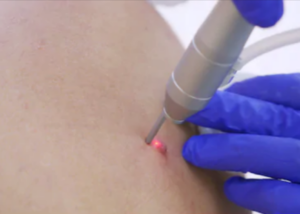
You’re not a hypochondriac if you fear that an itching, bleeding mole might be melanoma rather than benign.
“While people are familiar with the ABCD’s of mole evaluation- – Asymmetry (one half of the mole does not resemble the other half), Border irregularity (jagged or scalloped), Color changes (the mole has gained or lost pigmentation), Diameter growing (growth in size) — the E factor (evolving), which encompasses itching, bleeding and any other change, can also signal skin cancer,” explains Rebecca Tung, MD, a
“Seeing a dermatologist can help determine what is going on with the mole in question.
“Sometimes people may shave or traumatize a benign mole, leading to symptoms of bleeding and itching.
“However, an evaluation will help to shed light on whether the mole is harmless or requires a skin biopsy to make certain it is not cancerous.”
Dr. Tung’s specialties include general dermatology with skin cancer surveillance, moles, melanoma, surgery (Mohs micrographic, laser, skin cancer reconstruction) and cosmetic dermatology.
specialties include general dermatology with skin cancer surveillance, moles, melanoma, surgery (Mohs micrographic, laser, skin cancer reconstruction) and cosmetic dermatology.
 Lorra Garrick has been covering medical, fitness and cybersecurity topics for many years, having written thousands of articles for print magazines and websites, including as a ghostwriter. She’s also a former ACE-certified personal trainer.
Lorra Garrick has been covering medical, fitness and cybersecurity topics for many years, having written thousands of articles for print magazines and websites, including as a ghostwriter. She’s also a former ACE-certified personal trainer.
.









































